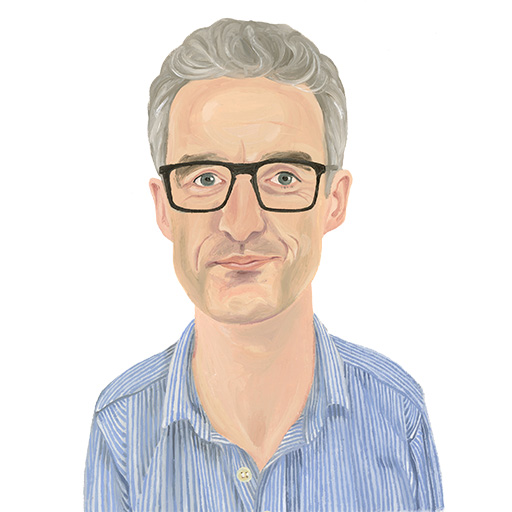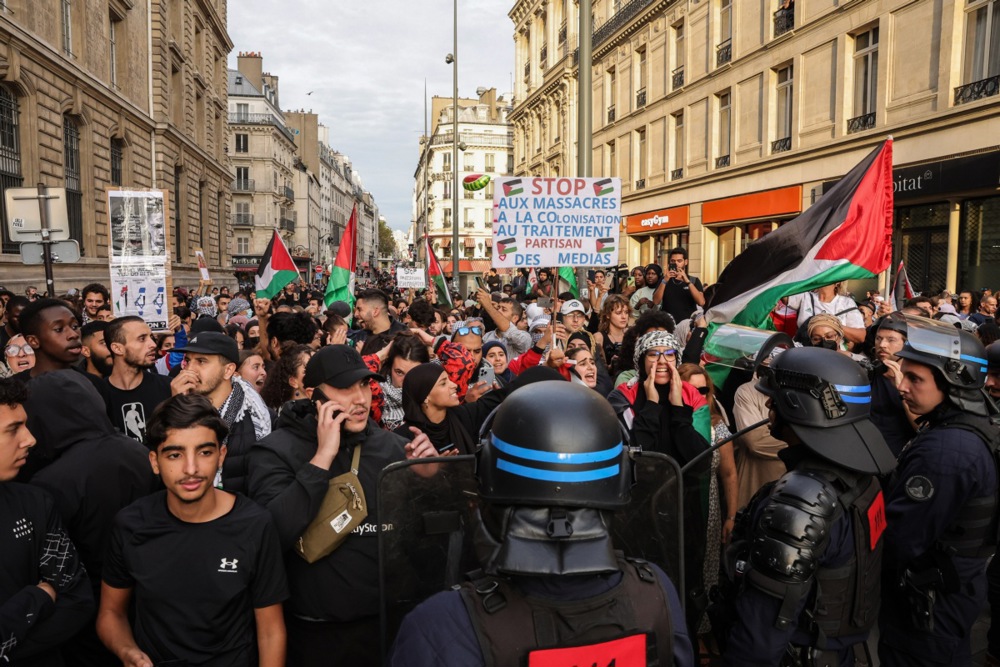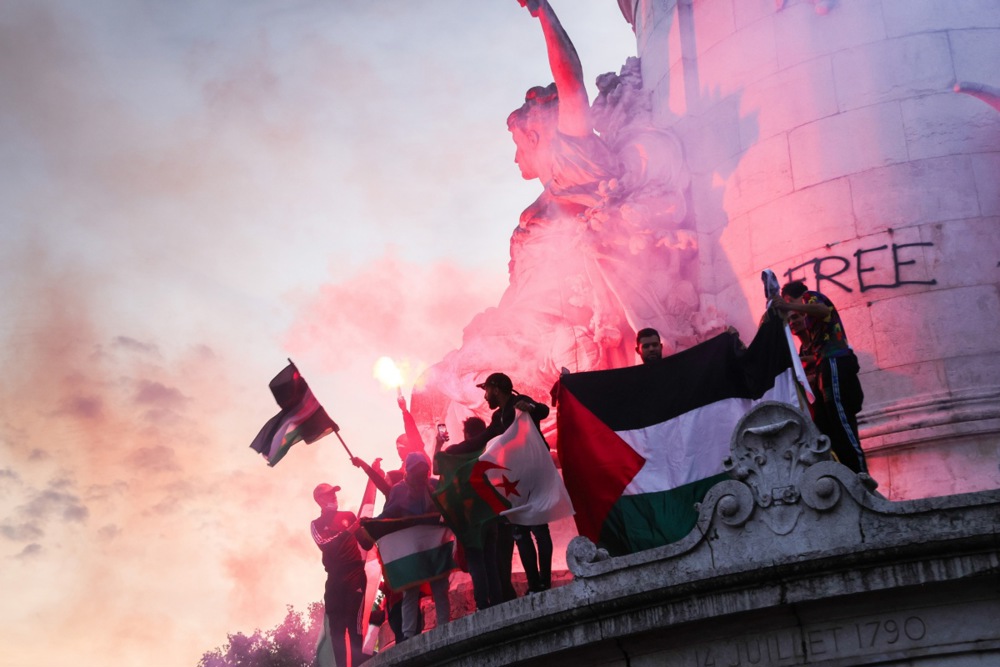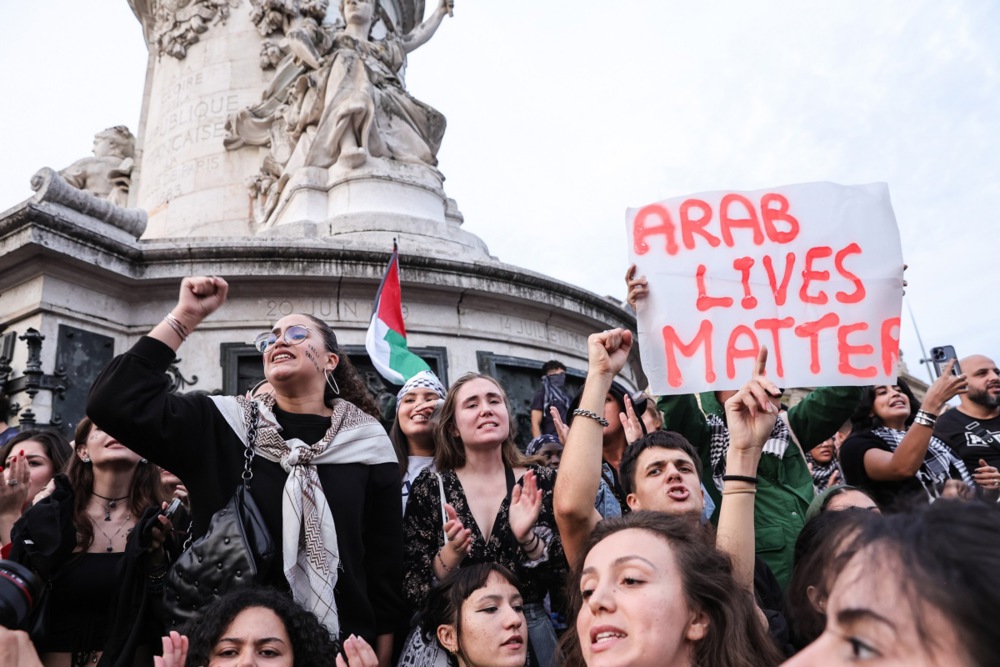I could understand people tearing down “pro-Israel” posters that proclaimed the entire population of Gaza are terrorists. But those posters are not being put up, nor is that lie being promulgated.
The posters being torn down in European cities were put up in commemoration of children killed or kidnapped by Hamas during its October 7 attack. Those killings and kidnappings are reality, and the people taking issue with such facts and censoring the related posters appear delusional if not hysterically adrift.
It’s creepy. I know everyone’s bored of the posters, but not a single one now remains that I can see. All torn. Nobody bothering to repost Here’s a line of dozens on the Finchley Road, with thousands of Jews passing every day pic.twitter.com/Y1nZrpMdPG
— Zoe Strimpel (@realzoestrimpel) November 10, 2023
The scale and vitriol of “pro-Palestine” protests in the wake of the Hamas attack against Israel — more precisely against Israeli civilians, as opposed to the Israeli state or military — increasingly appears to share the hallmarks of so-called “mass formation psychosis” that occurred during the pandemic.
It was a stunningly prolonged period when so many people embraced with enthusiasm measures such as lockdowns and dehumanising face masks, even though their efficacy was far from assured, if not entirely self-defeating (hence our shot-through economies and communities hanging by a thread today).
Posited by Belgian psychology professor Mattias Desmet, mass formation theory contends that in atomised and alienated modern societies lacking cohesion and legitimacy, people are so desperate for meaning in their lives that they will latch onto a “movement” to sustain their sense of identity and self-worth.
It’s similar to the idea of mob mentality, but the difference is that previously people would usually come to their senses relatively quickly after falling foul to herd mentality, whereas now people appear increasingly susceptible and remain in this hive mind state for longer (if not indefinitely).
There are clearly heart-rendering concerns to have about what is happening in Gaza and the seemingly never-ending “true tragedy” of the Palestinian people — especially the terrible civilian cost numbering in thousands of deaths in Gaza City from the Israeli air campaign. And I know more than I wish I did about that type of cost after my time with the British Army in Afghanistan when we dropped significant amounts of munitions.
But the nature of the Palestine protests, how they leave aside the evil perpetrated against Israel — if not calling for more retribution or framing it as some gallant freedom fight; just read descriptions of the way Hamas killed people based on footage of the attacks: pure evil and hellish butchery run riot — while being embraced by so many non-Palestinians not involved with the conflict, and turning a blind eye to how Hamas and Iran “wield authoritarian violence over Gaza” and manipulate its inhabitants for their own ends; add that all up and it appears indicative of the pathology of mass formation.

“These faraway conflicts are more than mere distractions: they are an opportunity for catharsis,” Arta Moeini writes in Gaza, Ukraine and our quest for catharsis for UnHerd. “They offer the fleeting possibility of escaping the existential angst of an atomised life lived under the automatism of modernity, and for feeling a sense of unity, purity and spiritual community forged in the virtual fires of War — all from the safety and comfort of their digital devices.”
Moeini notes how for those watching conflicts at a safe distance, war can “become therapeutic and is turned inward as yet another means for identity formation in one’s internal quest for social identity”.
As with the manipulative ideology of the BLM movement (whose “anti-racist” creed also spurred anti-Semitism back in 2020, argues journalist Zoe Strimpel), a massive blind spot of the emerging “Palestinian Lives Matter” movement is that, while entirely true, it totally leaves out — as the BLM movement did in failing to acknowledge black lives lost in Africa, for example, in the likes of Ethiopia’s civil war — the stunning numbers of Muslims killed elsewhere (and not by Israeli bombs).
For a start: 150,000 people killed in Yemen by Saudi Arabian air strikes; more than 300,000 Syrians dead after a decade of war; and hundreds of thousands, if not millions, of Sudanese estimated “to have been killed or to have died of conflict-related starvation and disease”.
This sort of myopia and almost existential lust for whatever “issue” dominates the news feed — while ditching nuance and critical thinking — is a real problem for modern-day Europe for two reasons.
Firstly, mass formation tendencies aren’t going away, with atomisation and the subsequent crisis of meaning only increasing in a high-tech-dominated societal order turning its back on tradition, religion, family, and more prosaic, less pink-haired forms of identity validation.
Secondly, the liberal project of embracing multiculturalism means swathes of EU country populations hold radically different belief systems to the rest of the population. This makes mass formation even more volatile when it happens, and more likely to pitch two sides vehemently against each other (with, on the one side, those embracing the mass formation, and on the other side those looking on and thinking: This just doesn’t add up).
The resulting societal damage and torpedoing of civic culture, as demonstrated by the unrestrained uproar — much of it unhinged — over the Israel-Gaza conflict, is immensely hard for the polity and ordinary people to navigate, leaving liberal democracies weakened as well as looking not fit for purpose.
Anti-Semitism has “swept France” since Hamas’s attack, Gavin Mortimer writes in The frightening bigotry of the French left for The Spectator, highlighting that there have been over 1,000 anti-Semitic acts in the country in the last month.
???? “There is a sense of fear and then there are very concrete threats”@srodan, Managing Director of @AJC_CE, on why anti-Semitism has become structural in French society ⤵️#F24Debate pic.twitter.com/7rb0fDfUIk
— The Debate – France 24 (@F24Debate) November 8, 2023
Mortimer notes the “well-dressed and middle-aged” French woman “seen angrily ripping down posters of missing Israeli children” and how “when challenged, she screeched ‘Israeli murderers’”.
Again that delusional element, tipping toward neurosis. And it’s happening all over Europe, including in that supposedly liberated, open-minded and inclusive bastion that the German capital proclaims to be.
“A social structure shakes with violence and shivers with fears of violence not merely when that structure is callously unjust, but also when its members must stimulate themselves to feverish activity in order to demonstrate how alive they are,” American sociologist and cultural critic Philip Rieff wrote in the 1979 edition of Freud: The Mind of the Moralist (of Eastern European Jewish extraction, Rieff had family who died in the Holocaust).
“That there are colonies of the violent among us, devoid of any stable sense of communal purpose, best describes, I think, our present temporarily schizoid existence in two culture — vacillating between dead purposes and deadly devices to escape boredom.”
Unfortunately, that “temporariness” Rieff spoke of appears to be becoming more entrenched, with too many “mouthing half-understood viral jargon to signal allegiance to some Borg-like collective intelligence,” as Park MacDougald puts it in the Tablet.
In such impassioned and confused times, the EU needs its politicians to steer clear of trying to play the therapist and offering “catharsis”. What they should be doing instead is providing robust leadership and moral clarity, lest Europe slide back to deeply dark habits.
Ones which underpinned the very creation of the European Union, in terms of Never Again.






Hamas has not just unleashed murder. It has made a massive strategic blunder setting the Palestinian cause decades back